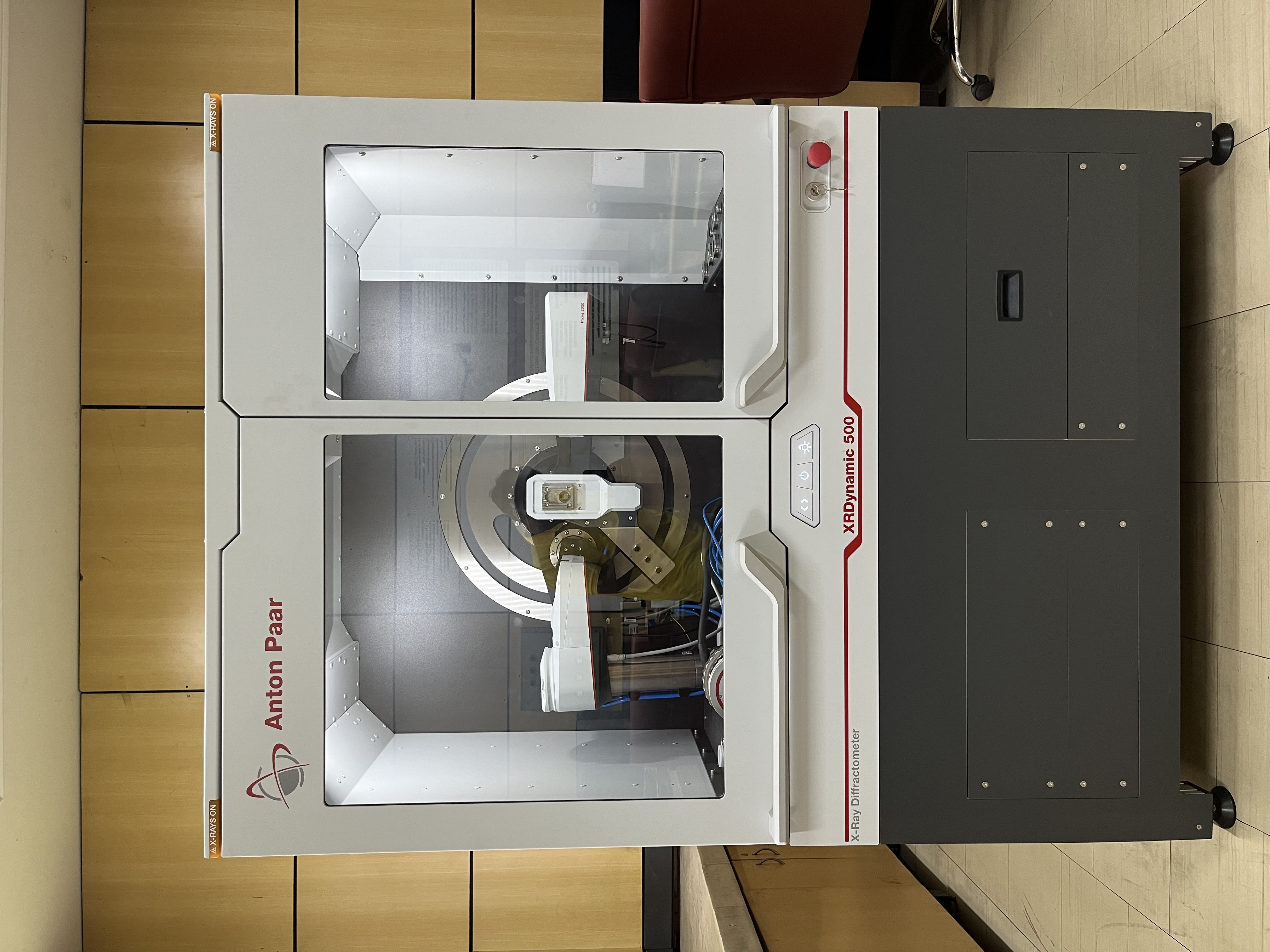
The XRDynamic 500 (make: Anton Paar) X-ray diffraction system is the basic platform for a wide variety of applications in analytical X-ray Diffraction, in both scientific and industrial research environments. The system is capable of providing high-quality powder diffraction data acquisition and processing facilities to the users for the identification of unknown minerals and compounds, crystal structure refinements and quantitative phase analysis using the Reitveld algorithm. The system has a non-ambient thermal attachment which is capable to measure diffractogram at variable temperatures in the presence of air up to 1300 °C.
Principle
Diffraction can occur whenever the Bragg law, nλ= 2dsinθ is satisfied. This equation puts very stringent condition on λ and θ for any crystal with crystal in a beam of X- ray will not in general produce any diffracted beam. Some way of satisfying the Bragg law must be devised, and this can be done by continuously varied distinguished the three diffraction methods.The crystallite size is the average size of a coherent scattering domain (perfect arrangement of unit cells or perfect crystal). The crystallite size may affect dissolution, material strength, catalytic activity or product aging. Note that crystallite size and grain size are not necessarily the same, since a grain may be composed of multiple crystallites. Crystallite size is reported in nm for each individual crystalline phase.Determination of crystallite size by XRD is ideal when crystallites are too small (<50000A) for optical methods, and XRD provides a means for determination of average crystallite size for bulk material sampling.
| The method of sample preparation is nondestructive(except for grinding) and the sediment fractions can berecovered for further testing or refinement. An exception to this is that calcite, aragonite and, to some extent,dolomite, gypsum, and anhydrite are dissolved in thedecalcification process.Typically, 25-g(10-cc)sediment samples are sub-mitted for X-ray diffraction analysis. |

